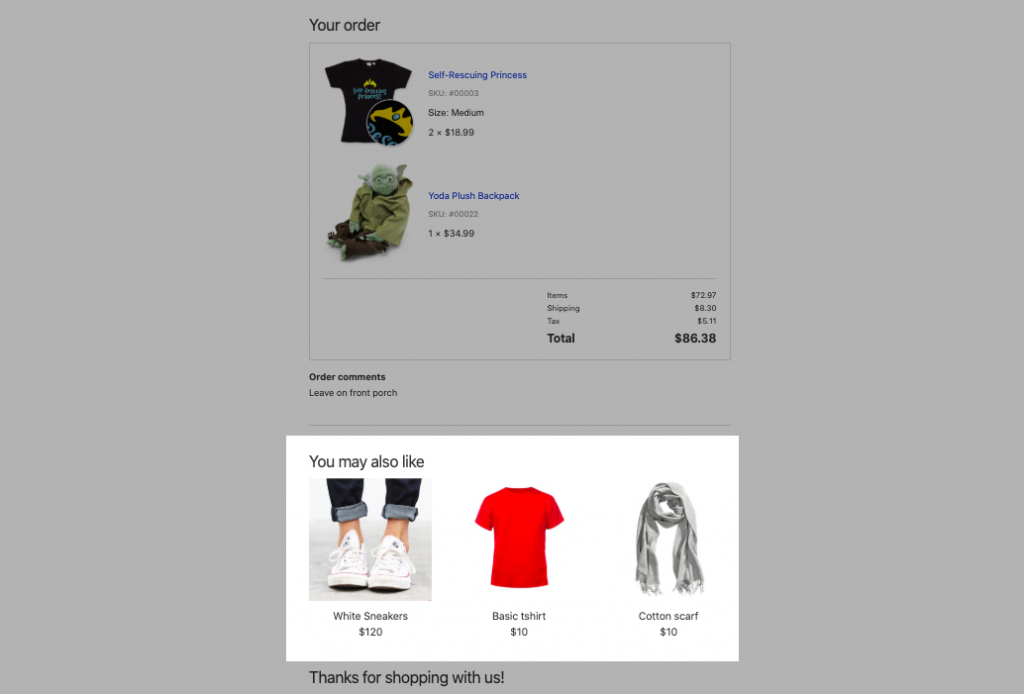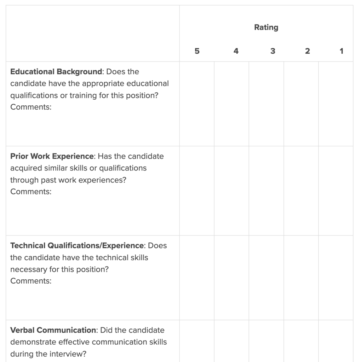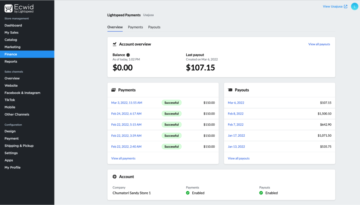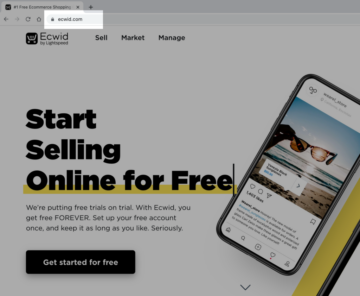Nowadays, meeting customer expectations is no longer just enough. To thrive, businesses must exceed these expectations, and leveraging customer-centric AI is key to achieving this goal.
Integrating AI into customer relationship management (CRM) enhances upselling and cross-selling strategies, allowing businesses to analyze extensive customer data for personalized recommendations.
Keep reading to discover how customer-centric AI elevates CRM strategies, offers personalized insights and real-time decision-making, and ultimately delivers more satisfying customer journeys.
Leveraging AI for Customer Insights
AI can reveal invaluable patterns and trends by analyzing huge amounts of data. It enables you to understand customer tendencies, habits, and preferences.
Before we discuss how AI can enhance customer relationship management, let’s dive into how AI algorithms analyze customer behavior and data.
How AI Algorithms Analyze Customer Behavior
AI is transforming how businesses analyze consumer behavior and changing how consumers engage with companies.
There are various tools business owners can use to process customer data with AI, but in general, here’s how the process works:
- Data collection: The ecommerce platform collects extensive data on customer interactions, including browsing history, purchase behavior, products viewed, product surveys, time spent on pages, and demographic information. Incorporating customer feedback into this data collection enriches AI’s understanding of customer satisfaction and service expectations.
- AI algorithms implementation: AI algorithms process and analyze this wealth of data. Machine learning in sales, such as collaborative filtering or content-based recommendation systems, is used to identify patterns and correlations among customer behaviors.
- Pattern recognition: The AI algorithms identify patterns, such as common product combinations frequently purchased together (cross-selling patterns) or products often viewed by customers before purchasing (indicative of preferences).
- Personalized recommendations: AI-driven recommendation engines leverage these insights. When a customer visits the platform, personalized product recommendations are generated in real time based on browsing history, past purchases, and similar user behaviors.
- Continuous learning and improvement: The AI algorithms continuously learn from new data inputs and customer interactions. As more data is collected, the models evolve and refine their recommendations, ensuring they remain relevant and accurate.
Sophisticated predictive analytics tools such as IBM’s SPSS Statistics, Alteryx, and Microsoft’s Azure Machine Learning process this data, identifying patterns, correlations, and trends that indicate potential future behaviors or needs.
Based on the analysis, predictive models are developed to forecast probable customer behaviors or needs. These models use statistical algorithms to predict outcomes, such as the likelihood of a customer making a certain purchase, churn probability, or preferred product categories.
AI-Infused Upselling & Cross-Selling Strategies
AI-infused upselling strategies leverage artificial intelligence to enhance sales by encouraging customers to purchase additional or upgraded products or services.
Here’s an overview of key AI-driven upselling tactics:
AI-Powered Product Recommendations and Customization
AI-driven customer profiling is a cornerstone of modern marketing strategies, using advanced algorithms to create detailed and dynamic profiles of individual customers.
By collecting and analyzing a wide range of customer data—such as purchase history, browsing behavior, demographics, and interactions with the business—AI pinpoints distinct behavioral patterns, preferences, and individual traits.
This enables sellers to offer tailored product recommendations based on individual customer behaviors and preferences to suggest complementary or upgraded products.
For example, Amazon’s AI algorithms analyze extensive customer data, including browsing history, items viewed, items purchased, and search queries.

Customers Who Bought This Also Bought recommendations on Amazon
Based on this analysis, Amazon’s recommendation engine employs machine learning models to predict and suggest products that align with each customer’s interests and preferences.
When a customer explores a specific product, Amazon’s AI generates Frequently Bought Together or Customers Who Bought This Also Bought recommendations, showcasing complementary or upgraded products. These suggestions encourage customers to consider additional purchases beyond their initial choice—and suggest items they may be interested in.
As customers interact with the platform, the AI continuously learns from their behaviors and refines its recommendations. The system adapts to individual preferences, ensuring increasingly accurate and relevant suggestions.

An example of how Amazon leverages user preferences data to create product recommendations. (Source: Rejoiner)
Amazon’s AI-driven product recommendations contribute significantly to the platform’s success in upselling. Customers are more inclined to explore and potentially purchase additional products, increasing sales and improving customer satisfaction.
By the way, if you sell online with Ecwid by Lightspeed, you can show related products with the You May Also Like section that appears on a product details page and at checkout.
Dynamic Pricing Strategies and Offer Optimization
AI enables dynamic pricing strategies by analyzing market trends, competitor pricing, and customer behavior in real time. This allows businesses to optimize pricing strategies for upselling, offering personalized discounts, or bundled deals that resonate with individual customers.
Uber, the ride-hailing service, uses AI-driven dynamic pricing, known as surge pricing, to optimize pricing strategies based on real-time demand, supply, and other factors.
Here’s how Uber implemented their dynamic pricing strategy with the help of AI.
Uber’s AI algorithms continuously analyze data in real-time, including factors like ride demand, traffic conditions, weather, time of day, and historical rider behavior.
Based on this analysis, Uber’s AI adjusts fares dynamically. During peak times or high demand, surge pricing is activated, increasing the fare to incentivize more drivers to be available, ensuring quicker pickups and meeting the increased demand.
Additionally, Uber may offer personalized discounts or promotions to individual riders based on their ride history, frequency of use, or specific occasions. For instance, targeted promotions may be offered to frequent users or during low-demand periods to encourage more rides.
These strategies maximize earnings for drivers and encourage riders to continue using them.
Enhancing Customer Experience
By leveraging AI in CRM, businesses can enhance customer experiences through personalized services.
For instance, Spotify uses AI algorithms to analyze user preferences, listening habits, and historical data to create personalized playlists, recommendations, and daily mixes for each user.

An example of a personalized playlist by Spotify
This personalized approach enhances the overall user experience by tailoring music to the unique preferences of each listener, making the time spent listening and discovering new music to their tastes more enjoyable.
Cross-Selling Tactics
Cross-selling tactics integrated into AI-enhanced CRM systems leverage artificial intelligence to identify and capitalize on opportunities to offer complementary products or services to customers aligned with customer buying behaviors.
For example, Netflix effectively tailors its marketing campaigns for cross-selling by recommending TV series or movies to users based on their viewing history.

Netflix makes recommendations based on a user’s viewing history
If a user likes to watch science fiction shows, Netflix’s algorithm suggests similar content or promotes a newly released series within that genre, encouraging the user to explore and watch more content.
Further enhancing these personalized marketing efforts, AI chatbots provide immediate, personalized recommendations to customers. This not only improves the shopping experience but also significantly increases sales opportunities by making every customer interaction an opportunity for targeted marketing and upselling.
Examples of AI-Enhanced CRM Systems
Integrating upselling tactics into AI-enhanced CRM systems involves leveraging predictive analytics to identify ideal upselling opportunities. AI-driven CRM systems prompt sales representatives with relevant upselling suggestions during customer interactions, enhancing the chances of successful upsells.
Einstein Analytics by Salesforce
Salesforce, a leading CRM platform, incorporates AI-powered tools like Einstein Analytics to assist sales representatives in identifying and capitalizing on upselling opportunities during customer interactions.
Salesforce’s Einstein Analytics leverages predictive analytics to analyze vast datasets within the CRM. It evaluates customer data, purchase history, interactions, and other relevant information to predict potential upselling opportunities.
Einstein Analytics spots patterns hinting at upselling opportunities. For example, detecting increased product usage may signal interest in upgrades or add-ons.
Salesforce’s AI system also provides sales reps with actionable insights. It offers upselling suggestions and talking points based on opportunities identified.
Sales reps leverage AI-driven suggestions to customize conversations, addressing customers’ needs with relevant upselling offers. For example, they may suggest an upgraded subscription or additional features based on usage patterns.
By the way, if you sell online with Ecwid, you can connect your online store to Salesforce via Zapier. This way, new customers will be created in Salesforce automatically from new Ecwid orders.
Amazon Personalize
Amazon Personalize, a machine learning service offered by Amazon, is designed to address challenges commonly encountered in creating personalized recommendations, including issues with new user data, popularity biases, and evolving user intent.
Unlike traditional recommendation engines, Amazon Personalize excels in scenarios with limited or evolving user data. This proves especially beneficial for identifying upselling opportunities, even with new users or when user preferences change over time.
Several well-known companies, such as Domino’s, Subway, and Yamaha, have recognized the significance of AI in understanding and catering to customer needs.
How to Tailor Marketing Campaigns for Upselling and Cross-Selling
You can tailor marketing campaigns for upselling and cross-selling with the help of strategic approaches even if you don’t use AI-powered tools.
For the best outcomes, you need customer data and targeted messaging. Here’s a breakdown of the process:
Perform Customer Segmentation
Use CRM data to segment customers based on their purchase history, preferences, and behavior. Categorize them into groups with similar buying patterns or interests.
If you sell online with Ecwid, you can view, find, and edit all the customer information you need on the Customers page. From there, you can filter your customer base using various parameters and export the segment to work with it in a different service (for example, to send targeted emails via an email service of your choice.)
The Customers page in Ecwid also offers access to customer order history, facilitating the segmentation process. By understanding your customers’ buying habits and preferences, you can tailor your messaging to each segment more effectively.

The Customers page in Ecwid admin
Identify Opportunities
Analyze purchase histories and behavioral data to pinpoint opportunities for upselling and cross-selling. Determine which products or services complement previous purchases or align with customers’ interests.
For instance, when selling online through Ecwid, you have the option to configure automated marketing emails showcasing related products or top sellers.

Related products in an order confirmation email
Make Personalized Recommendations
Create personalized recommendations based on customer segments. Use AI algorithms to suggest related or upgraded products in marketing materials, email newsletters, or on a website. For instance, Amazon’s Frequently Bought Together or You May Also Like sections.
Strive for Targeted Messaging
Craft targeted messaging that highlights the value of complementary products or services. Showcase how the additional offering enhances the customer experience or solves a specific problem.
For a truly optimized message, consider translating content to resonate effectively with diverse audiences and languages.
Offer Incentives or Bundles
Provide incentives like discounts, bundled deals, or loyalty rewards to encourage customers to explore additional offerings. Make the value proposition attractive and clear.
With Ecwid by Lightspeed, you can sell product bundles with the help of the Upsell & Cross-Sell Product Bundles, Product Bundles, and BOGO apps.
Apply Multichannel Approach
Implement a multichannel marketing strategy to reach customers through various touchpoints. Use emails, social media content, website pop-ups, and personalized platform recommendations.
Unveil the Power of Personalized Recommendations
In the dynamic landscape of customer relations, personalized recommendations and targeted marketing stand as pillars of success. By leveraging CRM data, you can unlock the potential for tailored upselling and cross-selling campaigns.
When finely tuned, these strategies resonate with individual customers, driving engagement, increasing sales, and nurturing brand loyalty.
Embrace insights from your CRM system, create custom campaigns, and see how meeting your customers’ unique preferences and needs can work wonders.
- SEO Powered Content & PR Distribution. Get Amplified Today.
- PlatoData.Network Vertical Generative Ai. Empower Yourself. Access Here.
- PlatoAiStream. Web3 Intelligence. Knowledge Amplified. Access Here.
- PlatoESG. Carbon, CleanTech, Energy, Environment, Solar, Waste Management. Access Here.
- PlatoHealth. Biotech and Clinical Trials Intelligence. Access Here.
- Source: https://www.ecwid.com/blog/customer-centric-ai-how-ai-can-improve-upselling-and-cross-selling.html
- :not
- access
- accurate
- achieving
- actionable
- activated
- adapts
- Additional
- additional products
- address
- addressing
- adjusts
- advanced
- AI
- algorithm
- algorithms
- align
- aligned
- All
- Allowing
- allows
- also
- Amazon
- among
- amounts
- analysis
- analytics
- analyze
- analyzing
- and
- appears
- approach
- approaches
- apps
- ARE
- artificial
- artificial intelligence
- assist
- attractive
- audiences
- Automated
- automatically
- available
- Azure
- base
- based
- before
- behavior
- behavioral
- behavioral data
- behaviors
- beneficial
- BEST
- Beyond
- biases
- bought
- brand
- brand loyalty
- Breakdown
- Browsing
- bundled
- bundles
- business
- business owners
- businesses
- but
- Buying
- Campaigns
- CAN
- capitalize
- capitalizing
- categories
- categorize
- catering
- certain
- challenges
- chances
- change
- changing
- Checkout
- choice
- clear
- CO
- collaborative
- collected
- Collecting
- collection
- collects
- combinations
- Common
- commonly
- Companies
- competitor
- Complement
- complementary
- conditions
- confirmation
- Consider
- consumer
- consumer behavior
- Consumers
- content
- continue
- continuously
- contribute
- conversations
- cornerstone
- correlations
- create
- created
- Creating
- CRM
- CRM system
- CRM systems
- custom
- customer
- customer behavior
- customer data
- customer expectations
- customer experience
- customer information
- customer needs
- Customer Relationship
- customer relationship management
- Customer satisfaction
- Customers
- customize
- daily
- data
- datasets
- day
- Deals
- delivers
- Demand
- demographic
- Demographics
- designed
- detailed
- details
- detecting
- Determine
- developed
- different
- discounts
- discover
- discovering
- discuss
- distinct
- dive
- diverse
- Dont
- drivers
- driving
- during
- dynamic
- dynamically
- each
- Earnings
- ecommerce
- effectively
- efforts
- einstein
- elevates
- emails
- employs
- enables
- encourage
- encouraging
- engage
- engagement
- Engine
- Engines
- enhance
- Enhances
- enhancing
- enjoyable
- enough
- enriches
- ensuring
- especially
- Even
- Every
- evolve
- evolving
- example
- exceed
- expectations
- experience
- Experiences
- explore
- explores
- export
- extensive
- facilitating
- factors
- Features
- Fiction
- filter
- filtering
- Find
- For
- Forecast
- Frequency
- frequent
- frequently
- from
- future
- General
- generated
- generates
- genre
- goal
- Group’s
- habits
- Have
- help
- High
- highlights
- historical
- histories
- history
- How
- HTML
- HTTPS
- huge
- ideal
- identified
- identify
- identifying
- immediate
- implemented
- improve
- improves
- improving
- in
- Incentives
- incentivize
- Inclined
- Including
- incorporates
- incorporating
- increased
- Increases
- increasing
- increasingly
- indicate
- indicative
- individual
- information
- initial
- inputs
- insights
- instance
- integrated
- Intelligence
- intent
- interact
- interaction
- interactions
- interest
- interested
- interests
- into
- invaluable
- involves
- issues
- items
- ITS
- Journeys
- jpg
- just
- Key
- known
- landscape
- Languages
- leading
- LEARN
- learning
- learns
- Leverage
- leverages
- leveraging
- lightspeed
- like
- likelihood
- likes
- Limited
- listener
- Listening
- longer
- Loyalty
- machine
- machine learning
- make
- MAKES
- Making
- management
- Market
- Market Trends
- Marketing
- Marketing Campaigns
- marketing efforts
- marketing strategy
- materials
- max-width
- Maximize
- maximize earnings
- May..
- Media
- meeting
- message
- messaging
- mixes
- models
- more
- Movies
- multichannel
- Music
- must
- Need
- needs
- Netflix
- New
- new users
- newly
- nurturing
- occasions
- offer
- offered
- offering
- Offerings
- Offers
- often
- online
- online store
- only
- opportunities
- Opportunity
- Optimize
- optimized
- Option
- order
- orders
- Other
- outcomes
- over
- overall
- overview
- owners
- page
- pages
- parameters
- past
- patterns
- Peak
- periods
- personalize
- Personalized
- pillars
- platform
- Platforms
- plato
- Plato Data Intelligence
- PlatoData
- points
- popularity
- potential
- potentially
- power
- predict
- predictive
- Predictive Analytics
- preferences
- preferred
- previous
- pricing
- probability
- Problem
- process
- Product
- Products
- Profiles
- profiling
- promotes
- Promotions
- proposition
- proves
- provide
- provides
- purchase
- purchased
- purchases
- purchasing
- queries
- quicker
- range
- reach
- Reading
- real
- real-time
- recognized
- Recommendation
- recommendations
- recommending
- refine
- related
- relations
- relationship
- Relationship Management
- released
- relevant
- remain
- Representatives
- Resonate
- reveal
- Rewards
- Ride
- riders
- rides
- sales
- salesforce
- satisfaction
- scenarios
- Science
- Science Fiction
- Search
- Section
- sections
- see
- segment
- segmentation
- segments
- sell
- Sellers
- Selling
- send
- Series
- service
- Services
- Shopping
- showcase
- showcasing
- Shows
- Signal
- significance
- significantly
- similar
- Social
- social media
- Solves
- Source
- specific
- spent
- Spotify
- spots
- stand
- statistical
- statistics
- store
- Strategic
- strategies
- Strategy
- streamline
- subscription
- success
- successful
- such
- suggest
- Suggests
- supply
- surge
- system
- Systems
- tactics
- tailor
- tailored
- tailoring
- talking
- targeted
- tastes
- tendencies
- that
- The
- their
- Them
- There.
- These
- they
- this
- Thrive
- Through
- time
- times
- together
- tools
- top
- traditional
- traffic
- transforming
- Trends
- truly
- tuned
- Uber
- Ultimately
- understand
- understanding
- unique
- unlock
- upgraded
- upgrades
- Usage
- use
- used
- User
- User Experience
- users
- uses
- using
- value
- various
- Vast
- via
- View
- viewed
- viewing
- Visits
- Watch
- Way..
- Wealth
- Weather
- Website
- when
- which
- WHO
- wide
- Wide range
- will
- with
- within
- Work
- works
- you
- Your
- zephyrnet













